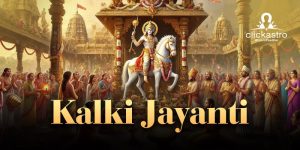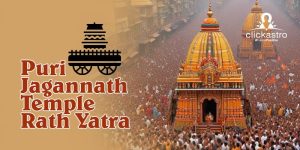Contents[hide]
Makar Sankranti 2025 – Everything You Need to Keep in Mind
A festival heralding new beginnings and an auspicious start to the year, the Hindu festival of Makar Sankranti is considered to be one of the main festivals that mark the Sun’s transit to Makara (Capricorn). Usually observed on January 14-15, Makar Sankranti is the first major Hindu festival in the Gregorian calendar. The term ‘Sankranti’ implies movement, and it marks the beginning of the Uttarayana or the northward movement of the Sun. Many people also consider the auspicious festival as the harbinger of a good harvest. Charity performed on this day is considered to be of great significance. The festival is dedicated to Lord Surya, and it is believed that on this day, the Sun God visits his son Shani. This festival is celebrated with great pomp and fervour in many parts of India, as people celebrate the onset of harvest.Makar Sankranti 2025 – The Beginning of Auspicious Tidings
The date on which Makar Sankranti falls is determined as per the solar cycle, even though most of the Hindu festivals follow the lunar calendar. The word ‘Sankrant’ denotes the Sun’s transit into a new rasi/zodiac and also marks the beginning of the solar month. On Makar Sankranti the Sun transits into the Makara rasi or Capricorn, marking the beginning of the Makara month.This year, Makara Sankranti will be celebrated on January 14, TuesdayThe Punya Kaal timings for Makar Sankranti are as below:
- Makara Sankranti on Tuesday, January 14, 2025
- Makara Sankranti Punya Kala – January 14, 8:55 AM – January 14, 5:57 PM
- Duration – 9 hours 2 minutes
- Makara Sankranti Maha Punya Kala – January 14, 8:55 AM – January 14, 9:19 AM
- Duration – 0 hours 24 minutes
- Makara Sankranti Moment – 14 January, 08:55 AM
Rituals and Puja Vidhi for Makar Sankranti
 As people prepare for Makar Sankranti, they clean their houses and puja rooms and keep them ready for the puja. The puja is performed to gain the blessings of Lord Surya; hence an idol or an image of Lord Surya is placed on the altar and decorated and offered flowers, money, incense sticks, betel nuts and leaves, holy water, turmeric powder, and a plate with four white and black laddoos made from sesame. Women cover their heads with a sari or shawl during the puja. While performing the auspicious puja, the devotees chant the Surya mantra
As people prepare for Makar Sankranti, they clean their houses and puja rooms and keep them ready for the puja. The puja is performed to gain the blessings of Lord Surya; hence an idol or an image of Lord Surya is placed on the altar and decorated and offered flowers, money, incense sticks, betel nuts and leaves, holy water, turmeric powder, and a plate with four white and black laddoos made from sesame. Women cover their heads with a sari or shawl during the puja. While performing the auspicious puja, the devotees chant the Surya mantra
Across the expanse of India, Makar Sankranti is celebrated in different names. The rituals also vary according to the region. Makar Sankranti is known by various names such as Lohri in Punjab and certain North Indian regions, Sukarat in central regions, and Sankranti or Pongal in Southern regions. It is celebrated in Haryana, Punjab, and Himachal Pradesh regions as Maghi, the name signifying the corresponding lunar month of Magha. For the Assamese Hindus, the Makar Sankranti festival is known as Magh Bihu or Bhogali Bihu. In West Bengal, it is Poush Sankranti. In the states of Uttar Pradesh and Madhya Pradesh, it is known as Sankrant. In Bihar, it is Kichari. Going South, this festival is known as Pongal in Tamil Nadu and is celebrated with huge fanfare. It is known as Pedda Panduga in Andhra Pradesh and Sankranti in Karnataka, indicating the diversity of the country. Every state has a unique ritual, based on its culture and traditions, but for all, it is related to the astrological and agricultural cycles and has certain observances in common such as paying respect to the Sun, the Earth, the crops, and the cattle. Also, in some regions, observing vrat or fasting, conducting pujas at home, and giving alms to the poor and needy are considered auspicious. In Uttar Pradesh, people follow the ritual of having a holy bath in the Ganges. The ‘Magh Mela’ commences on this day at Prayag in Allahabad, and devotees flock to the region to obtain blessings. In the northern state of Punjab, people light bonfires on the eve of Sankranti and perform puja around the sacred fire. They throw rice and sweets into the fire as offerings. Grand feasts are partaken by the people, and they perform the ‘bhangra’ dance around the fire. Kite flying is a prime sport during Makar Sankranti in Gujarat. People gather on the terraces and open spaces to fly kites of various shapes and sizes. Other rituals include elders of the family gifting the younger members. In Maharashtra, Makar Sankranti is celebrated with great fervour. Various sweets are prepared from jaggery and sesame and exchanged among one another with the greetings of “Tilgud ghya ani god god bola”, meaning “partake the sweetness of jaggery and sesame and speak sweetly as the sweet.” Maharashtra also witnesses married women performing the age-old tradition of ‘Haldi Kumkum’, which is attended by other women folk from the area who apply the Kumkum and turmeric powder on each other’s forehead and exchange gifts and sweets. There is also a ritual of buying new utensils for the house, by the women, thus bringing in luck and prosperity. Get Your Free Marriage Predictions In Tamil Nadu and Southern parts of India, Makar Sankranti marks the harvest season. Paddy is harvested on this day, and sweet offerings made of rice, jaggery, pulses, milk, and ghee are prepared and offered to the family deity. The festival goes by the name of ‘Pongal’ and is celebrated for four days in Tamil Nadu. The famous Ganga Saagar Mela commences on this day in Bengal. The Mela is organized in the delta regions of the Ganga, where the river merges with the Bay of Bengal. Devotees take holy dips in Ganga and offer morning prayers to Lord Surya at dawn. Makar Sankranti is observed as New Year by the tribes of Orissa and is welcomed with local food, which is shared among friends and families. As you can see, the festival is celebrated with pomp and fervour throughout the country.“Om Hram Hreem Hroum Sah Suryay Namah”
Makar Sankranti – A Legendary Festival
According to Hindu mythology and legend, Sankranti – after whom the festival has been named – was a deity who annihilated a demon named Sankarasur. It is considered the date on which the Sun began to move northwards, as, before Makar Sankranti, the Sun shone on the southern hemisphere. This is believed to be the period of Uttarayan by Hindus and is considered to be a period of auspiciousness. The significance of Makar Sankranti has been mentioned in Vedic texts. According to Mahabharata, Bheeshma Pitamaha, who was blessed with the boon of choosing his time of death, waited for the beginning of Uttarayana to liberate his soul from his body lying on a bed of arrows. Another legend associated with Makar Sankranti is that Lord Surya chose this day to visit his son Shani – the lord of Makara rasi. Hence, it is a belief that this day signifies the strengthening of bonds or resolving the conflicts between a father and son. There is another legend associated with this festival indicating the triumph of Lord Vishnu over the Asuras. It is believed that Lord Vishnu ended the distress caused by Asuras on PrithviLok by chopping their heads off and burying them under the Mandara Parvat. Hence, Makar Sankranti also signifies the victory of good over evil and the start of auspicious tidings.Why is Makar Sankranti Celebrated in India?
Indians observe Sankranti every time the Sun enters a new rasi. However, Makar Sankranti is more significant as it arrives after the southern winter solstice and marks the beginning of the Sun’s movement towards the north.Makar Sankranti is celebrated as a reminder of the fact that life is sustained by these relative movements of the Earth and the Sun. The change of seasons, the equinoxes, the northern solstice (summer solstice), the southern solstice (winter solstice), etc., are all the results of such movement. During the winter solstice, the tilt of the earth is at maximum, and the Sun reaches its southernmost point. From this day, the Sun’s northward movement gets strong, and Makar Sankranti marks the beginning of the period with steady growth in the duration of daytime and fills people’s lives with light.







Thankyou for sharing the topics of Chaturthi . They are very help full for us many people are happy to see it for the information about the Sankashti chaturthi.
How wonderful! Preparing for Makar Sankranti with a ritualistic cleaning, creating a sacred space for the puja.
Yours Truly
Rahul Dubey
learndigitalwithrahul.com